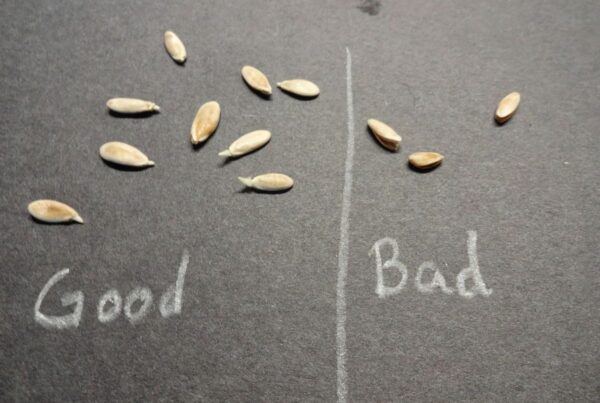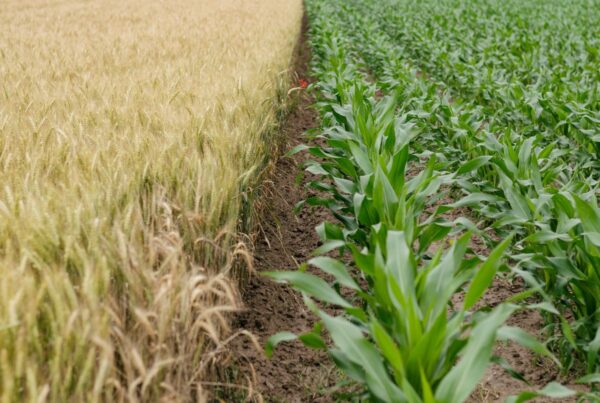Seed germination is the miraculous process that transforms a dormant seed into a thriving plant. This fundamental botanical event involves the absorption of water by dry seeds, leading to the activation of growth processes under the right conditions of light, temperature, and oxygen. As we explore the journey from seed to seedling, we’ll uncover the intricate details of hydration, radicle emergence, and the growth of the hypocotyl. Additionally, we’ll delve into the practical aspects of germinating seeds at home, providing tips and tricks to create the ideal environment for your soon-to-be green companions.
Key Takeaways
- Seed germination begins with the absorption of water, rehydrating the seed and initiating the growth of the embryonic plant.
- The radicle’s emergence from the seed marks the first visible sign of germination, followed by the growth of the hypocotyl.
- Optimal germination conditions include the right balance of moisture, light or darkness, adequate oxygen, and a suitable temperature range.
- Some seeds require stratification, a period of cold treatment, to break dormancy and trigger germination, while others need a warm environment.
- Common germination mistakes to avoid include overwatering, incorrect temperature settings, and poor moisture management that can lead to mold and algae.
The Secret Life of Seeds: A Germination Tell-All

The Thirsty Seed Chronicles: Hydration and the Start of Something Big
Alright, folks, let’s dive into the splashy world of seed hydration. Imagine your seeds are tiny party-goers just waiting for the right bash to kick things off. Water is that epic party invite they’ve been waiting for. Once they get a sip, it’s like flipping the ‘on’ switch for the grow show.
Now, don’t go thinking you can just flood ’em with a hose and call it a day. It’s more like crafting the perfect cocktail. You’ve gotta mix the right amount of H2O with a cozy temp and just enough light to get those babies to pop their heads out.
- Start with a gentle sprinkle, not a tsunami.
- Keep it consistent; think of it as setting a drinking schedule for your seeds.
- Watch for the magic moment when the radicle says ‘hello’ to the world.
Pro tip: Your seeds are like Goldilocks, they want their water just right. Too much and they’ll be swimming, too little and they’ll be parched. Find that sweet spot.
Remember, it’s all about that first root, the radicle, busting out like it’s breaking free from Alcatraz. Then comes the hypocotyl stretch, reaching for the sun like it’s the last slice of pizza. Keep an eye on your seedlings, and you’ll be on your way to a thriving crop that’ll make your fellow Oklahomans green with envy.
Breaking Ground: The Radicle’s Grand Entrance
Alright, folks, let’s talk about the moment we’ve all been waiting for: when that little seed finally decides to break through and say howdy to the world. It’s like the radicle’s coming out party, and let me tell you, it’s one heck of a shindig. This is the first sign that your baby plant is ready to take on the world, or at least your backyard.
Now, don’t go thinking this is some kind of delicate process. Nah, that radicle’s got more grit than a truck stop diner’s coffee. It’s gotta push through soil that’s sometimes as tough as the questions at a town hall meeting. But with the right conditions—talking about that sweet spot of oxygen, temperature, and maybe a little boogie-woogie in the dark—your seed’s gonna make that grand entrance like a star.
So, here’s the skinny: keep your soil loose and your vibes high. Your little green buddy’s working hard down there, and it’s about to put on a real show.
Remember, it’s not just about throwing seeds in the dirt and hoping for the best. You’ve got to set the stage for success. Here’s a quick checklist to make sure you’re on track:
The Hypocotyl Hustle: Stretching Towards the Sun
Alright, you’ve seen that little radicle pop out, and you’re probably thinking, "Party’s over, right?" Nope, it’s just getting started! Now comes the hypocotyl hustle, where that tiny stem tissue starts groovin’ upwards, doing the limbo under the soil until – bam! – it breaks through to the sunlight. It’s like watching a slow-mo dance-off where the prize is a lifetime supply of photosynthesis.
This is the moment where your seedling is gearing up to throw some serious shade – by growing its first true leaves, that is.
So, what’s the secret sauce for a successful stretch to the sun? It’s all about the TLC – Temperature, Light, and Care. Keep the soil warm, but not hot enough to cook an egg, and give those babies some light, but not so much they need tiny sunglasses. And care? Well, that’s just you cheering them on from the sidelines.
- Keep the soil warm
- Light, but not too much
- Cheer them on
Remember, each seed is on its own journey, and some might take a detour or two. But with the right conditions, you’ll have a whole crew of seedlings reaching for the stars – or at least the nearest grow light.
The Germination Station: Setting Up Your Seed Spa

The Perfect Bed: Choosing Your Germination Medium
Alright, green thumbs and ganja gurus, let’s talk dirt—or rather, the lack thereof. When you’re setting up the VIP lounge for your seeds, you gotta think beyond the backyard mud. Your seeds are high-class guests, and they deserve a five-star germination medium.
First off, chuck those boulders outta there—anything bigger than a golf ball is just rude. And those clumpy lumps? Break ’em up like a bad relationship; your delicate seedlings don’t need that kind of negativity in their life. Now, if you’re planting the big boys like peas or beans, they can handle a bit of roughhousing, but for the tiny tots like lettuce, it’s gotta be smoother than a baby’s bottom.
Here’s the lowdown on what your seeds are craving:
- Light: They’re not vampires, but they don’t need a spotlight to get the party started.
- Water: Think of it as the seed’s favorite cocktail—it needs just the right mix to get groovin’.
- Oxygen: This ain’t no stuffy club; make sure the soil’s airy enough for them to breathe.
- Temperature: It’s all about setting the mood. Too cold and they’ll ghost you, too hot and they’ll bail.
And hey, if you’re feeling fancy and want to speed up the warming process, ditch the mulch coat from winter. Let the sun give that soil a good tan, and you’ll have sprouts popping up like eager partygoers.
Remember, folks, this ain’t a one-size-fits-all kinda deal. Some seeds like it hot, some like it cool, and if you’re not sure, just think about what you’d want if you were a seed. Probably a cozy spot with just the right vibes. So, get that germination station set up right, and you’ll be the talk of the town—or at least the talk of the seedlings.
The Chill Factor: Why Some Seeds Like It Cold
Alright, folks, let’s talk about the cold shoulder some of your seeds actually need to kickstart their growth. You might think your seeds are just being picky, but there’s a method to the madness. It’s called cold stratification, and it’s like a secret handshake that tells your seeds, ‘Hey, winter’s over, time to wake up!’
Now, you might be scratching your head, wondering why on Earth seeds would need to pretend it’s winter to start growing. Well, it’s all about tricking those little guys into thinking they’ve survived the cold season and it’s safe to sprout. Some seeds won’t even consider popping their heads out without a good chill. It’s their way of avoiding a frosty demise.
Here’s a quick rundown of the best germination temperatures for different plants:
- Tomato: 70-95°F (but don’t you dare go over 95°F)
- Watermelon: 75-95°F (100°F and they’re toast)
- Zucchini: 70-95°F (105°F is a no-go zone)
Just remember, soil temperatures are the real MVP here. Air temps can be as misleading as a politician’s promise when it comes to seed starting. Keep an eye on that soil thermometer, or you’ll be playing a guessing game that your seeds won’t win.
So, before you start playing DJ with your thermostat, make sure you’re not just spinning your wheels. Get those temperatures right, and your seeds will be dancing their way to the surface in no time!
Moisture Mania: Keeping Seeds Happy, Not Soggy
Alright, green thumbs and ganja gurus, let’s talk about keeping your seeds just the right amount of damp. You know the drill: seeds need to be cozy and moist to kick off the party, but too much of a good thing and you’ll be hosting a funeral instead of a germination celebration. Keep it moist, but don’t drown the little dudes.
Here’s the skinny on watering without going overboard:
- Imagine your seed’s chilling in a hammock – that’s the soil. You wanna give it a gentle push (a.k.a. water) to get it swinging (a.k.a. germinating).
- Water to the depth of the seed’s hideout. If your seeds are playing hide and seek half an inch down, don’t flood the whole playground, capisce?
- Keep an eye on the weather. If it’s hotter than a billy goat in a pepper patch, you’ll need to water more often. If it’s cooler, ease up on the hydration station.
Pro tip: Think of watering like you’re buying drinks for a friend. You want to keep them happy, not carry them home.
And remember, consistency is key. You don’t want your seeds to go from a splash pad to the Sahara. Keep the moisture steady, and you’ll have sprouts popping up faster than you can say ‘Jack Robinson’.
Sprouting Shenanigans: Tips and Tricks for Eager Seedlings

Temperature Tango: Finding the Sweet Spot for Sprouting
Alright, folks, let’s talk about getting cozy with your seeds. You know how you like your room just the right temperature? Well, seeds are picky roommates too. They need that Goldilocks zone of soil warmth to kick off their growth spurt. Too chilly and they’ll just snooze away, too hot and they might just throw in the towel.
Here’s a quick cheat sheet for you:
| Crop | Min Temp | Optimal Range | Max Temp |
|---|---|---|---|
| Asparagus | 50 | 60 – 85 | 95 |
| Bean | 60 | 70 – 85 | 95 |
| Tomato | 50 | 70 – 95 | 95 |
Just like you wouldn’t fry an egg on the sidewalk in the middle of summer, don’t cook your seeds with too much love. Keep it cool, but not cold, and you’ll be on your way to a sproutin’ good time.
Remember, these are just starting points. Your little green babies might need a bit of tweaking to find their happy place. And hey, if you’re feeling adventurous, throw in a thermometer and play scientist. It’s all about finding that sweet spot where your seeds feel like dancing.
Light or Lack Thereof: The Great Germination Debate
Alright, let’s hash it out – the light situation. You’ve probably heard the old wives’ tale that seeds need to be tucked in the dark to sprout. Well, there’s a kernel of truth to that. Most seeds are like moody teenagers; they prefer the lights off to get going. But here’s the kicker, not all seeds are the same. Some are divas and demand a spotlight to wake up.
So, what’s the deal with our green babies? Well, it’s a bit of a mixed bag. For the most part, keep ’em in the low light or play it safe with darkness until they poke their heads out. Once they do, it’s showtime – they’ll want all the light they can get to strut their stuff.
Now, don’t go turning your grow room into a disco just yet. Seedlings are delicate little things. Too much light too soon, and you’ll have a drama on your hands.
Here’s a quick rundown of what your seeds might be craving:
- Darkness Lovers: Keep ’em buried and in the dark, like a treasure chest.
- Light Seekers: Sprinkle on top and give ’em a little light love.
Remember, seeds are like that one friend who can’t decide where to eat – they’re all different. So, check the seed packet or hit up your local grow guru for the scoop on your specific strain.
Oxygen: The Invisible VIP at the Seed Soiree
Alright, folks, let’s talk about the life of the party that nobody sees but everybody needs: oxygen. You wouldn’t throw a shindig without some good ol’ O2, and your seeds feel the same way. When it comes to germination, oxygen is like that cool breeze on a hot Southern Oklahoma day—it’s essential.
Without enough oxygen, your seeds are gonna throw a tantrum and refuse to sprout. It’s like they’re holding their breath until you get it right. But don’t you worry, I’ve got a few tips to keep your seeds breathing easy and your operation running smoother than a well-oiled tractor.
- Aerate your soil: Don’t pack it down like you’re stuffing a turkey. Keep it loose and crumbly.
- Mind your water: Too much and you’ll drown the party. Just enough to keep the soil moist, not soggy.
- Check your containers: Make sure they’ve got holes for air to sneak in and carbon dioxide to slip out.
And remember, just like a good party, it’s all about balance. Too much oxygen and your seeds will be gasping for moisture. Too little and they’ll suffocate. Find that sweet spot and watch your seedlings boogie down.
So, keep an eye on your seed spa, and make sure oxygen is on the VIP list. Your seeds will thank you with some lush, green growth that’ll make your operation the envy of the neighborhood.
The DIY Bean Bag Brouhaha: A Germination Experiment

Soak to Awaken: The Overnight Bean Bash
Alright, green thumbs and budding botanists, let’s talk about kickstarting your seeds with a good ol’ soak. Think of it as the first wild party for your soon-to-be sprouts. For some seeds, an overnight soaking in water is sufficient to bring the seed out of dormancy. Sometimes hot water works better, but hey, we’re not making bean soup here.
Before you tuck those seeds into their cozy bag bed, give ’em a good dunk. It’s like a spa day for seeds, and who doesn’t love a spa day, right?
Now, don’t go tossing a whole can of beans in there. Keep it simple, like Martha Prado says, just 3 or 4 beans will do the trick. You want to be able to see the action without a bean brawl breaking out. And remember, those little guys will be as fragile as your Aunt Edna’s antique china once they start to germinate, so no squishing!
Here’s the lowdown on the setup:
- Soak your bean seeds overnight. They’ll wake up more refreshed than you on a Saturday morning.
- Drain the seeds, because nobody likes pruny beans.
- Get a paper towel damp, not drenched, and fold it into a bag.
- Press the seeds against the towel like you’re tucking them in for a good night’s sleep.
- Seal the bag, hang it up, and let the magic happen.
Within a day, you’ll see those seeds start to pop like they’ve heard their favorite tune. Give it a week, and you’ll have sprouts ready to hit the soil dance floor. Just don’t forget to move them before they get too comfy in their window-side lounge.
Paper Towel Pillow Talk: Prepping Your Seed’s Snug Spot
Alright, folks, let’s get down to the nitty-gritty of tucking your seeds into their cozy paper towel beds. First off, you’re gonna want to lay out your paper towels like you’re setting the table for a tiny green guest. Dampen them with the finesse of a bartender mixing a mojito – not too soggy, just the right amount of moisture. Now, sprinkle those seeds like you’re seasoning a gourmet dish, ensuring they’ve got room to breathe and stretch their soon-to-be roots.
Next up, fold the paper towel like you’re wrapping a present, one that’s gonna surprise you with sprouts in a few days. Slide this precious package into a plastic bag or a container, but don’t seal it tighter than a drum; remember, seeds are living things, they need air just like you and me.
And here’s the kicker: you don’t need fancy equipment to get this party started. A simple setup will do the trick, and you’ll be on your way to sprout city before you know it.
Keep an eye on your seed babies, and make sure they stay moist but not drenched. Think of it like a spa day – you wouldn’t want to drown in the hot tub, right? Give ’em a peek every now and then to make sure they’re not drying out or throwing a pool party without your permission.
Window Watching: The Suspense of Sprouting Seeds
Alright, y’all, it’s showtime at the window sill theater, and your beans are the stars of the show! You’ve got ’em snug in their paper towel beds, pressed up against the glass like little green voyeurs, just itching to break free. Now, the waiting game begins.
Keep your peepers peeled, ’cause within a mere 24 hours, you might catch the first act of the sprout spectacular—those seeds start to pop open like tiny treasures in a pirate chest. And let me tell ya, it’s more thrilling than a double rainbow after a summer storm.
Patience is a virtue, and with seeds, it’s practically a requirement.
By day three to a week, you’ll be grinning ear to ear as you witness a full-blown germination jubilee. And just when you think the party’s over, bam! Those little leafy limbs start waving at you, ready to dive into some dirt and keep the growth gala going.
Here’s a quick rundown of what to expect:
- Day 1: Seeds swell, might crack a smile.
- Day 3-7: Sprouts strut their stuff.
- A few days later: Leafy high-fives all around.
Remember, these are more than just seeds; they’re the start of your next big harvest. So give ’em the front-row seat they deserve and enjoy the suspense!
Germination Faux Pas: Avoiding Common Seed Snafus

Drowning Drama: The Perils of Overwatering
Alright, green thumbs and budding botanists, let’s talk about giving your seeds a drink without sending them to a watery grave. Overwatering is like throwing a pool party where nobody knows how to swim. It’s a surefire way to drown your dreams of a bountiful harvest.
Here’s the deal: seeds are thirsty, but they ain’t fish. They need that H2O to kickstart the magic, but too much and you’ll be hosting a fungal fiesta. And trust me, mold and algae are guests you don’t want at your garden get-together.
- Water to the depth: Your seeds are napping just below the surface, so water just enough to reach ’em, not to create an underground lake.
- Feel the soil: If it’s soggy, back off with the watering can. Your seeds need to breathe, not snorkel.
- Watch the weather: Mother Nature might be doing the watering for you. Don’t double-dip.
Pro tip: Keep a close eye on your seedlings, especially if you’re using a dome lid. High humidity and heat can turn your seed spa into a sauna, and nobody wants steamed sprouts.
Remember, folks, moderation is key. Your seeds want to feel like they’re at a chill spa, not caught in a monsoon. Keep it light, keep it easy, and you’ll be on your way to a crop that’s high on life, not underwater.
Heat Mat Mayhem: Avoid Cooking Your Crop
Alright, folks, let’s talk about keeping your seedlings from turning into a barbecue. You’ve got your heat mat, and you’re ready to turn those seeds into sprouting champions. But hold your horses! Cranking up the heat too high is like inviting your seeds to a cookout where they’re the main course.
Here’s the deal: different plants have their own VIP temperature lounges. For instance, your basil likes to party at a balmy 75-90F, while your cool-season pals like lettuce prefer a chill 65-70F. Don’t mix up the guest list, or you’ll have a garden party disaster on your hands.
Now, if you’re thinking, ‘But I want my babies to grow up fast!’ remember that patience is a virtue, especially in the seed world. A gentle, consistent warmth is what you’re aiming for. Check out this handy table for the optimal temperature ranges:
| Plant | Min Temp | Optimal Range | Max Temp |
|---|---|---|---|
| Basil | 70F | 75-90F | 95F |
| Bean | 60F | 70-85F | 95F |
| Cucumber | 60F | 60-95F | 105F |
| Pepper | 60F | 65-95F | 95F |
Pro tip: If you’re using a heat mat, think of it as a cozy electric blanket, not a tanning bed. You want to warm the soil, not bake it.
So, keep an eye on those temps, and don’t let your enthusiasm turn your grow op into a no-go op. Happy germinating!
The Mold and Algae Soap Opera: A Moisture Cautionary Tale
Alright, folks, let’s talk about the uninvited guests at your seed soiree: mold and algae. These party crashers love to show up when you’re just trying to get your green babies to sprout. Mold thrives in dark and damp conditions, turning your grow operation into a horror flick faster than you can say ‘spore’. And algae? It’s like that green gunk that clings to everything when you’ve been a bit too generous with the H2O.
Now, don’t go turning your grow room into the Sahara; your seeds need that moisture to break out of their shell. But here’s the kicker: too much of a good thing can lead to a slippery, slimy mess. So, how do you keep the balance? Easy peasy.
- Keep an eye on the wetness; your seeds like to sip, not swim.
- Ventilation is your best friend; let that air flow to keep the funk away.
- Prune and trim like you’re the Edward Scissorhands of the plant world; overcrowding is a no-go.
And remember, a little dryness won’t hurt. It’s better to have your seeds asking for a drink than to drown them in your overzealous watering efforts.
So, keep it cool, keep it breezy, and keep those seedlings happy without the drama. Tackle the common problem of algae growth with a watchful eye, and you’ll be the talk of the town—or at least the hero of your own grow op.
Conclusion: The Seed-y Side of Life
Alright, green thumbs and curious minds, we’ve dug deep into the dirt of germination, and it’s time to wrap this seed saga up! Remember, those little embryonic plantlets are just waiting for their spa day with the right mix of H2O, cozy temps, and a dash of darkness (or light, they’re not picky). Whether you’re chilling seeds in your fridge like a veggie sommelier or hanging bean babies in a window, the magic of life is literally in your hands. So keep ’em moist (not soggy, folks), warm (not hot, we’re not baking bread here), and give them the tender love and care they deserve. Who knew playing with dirt and seeds could be such a hoot? Now go forth and germinate like the plant whisperer you were born to be!
Frequently Asked Questions
What is seed germination?
Seed germination is the process where dry seeds absorb water under the right conditions of temperature and light, rehydrate, and begin to grow. The first visible sign is the emergence of the radicle, followed by the hypocotyl, leading to the growth of the seedling’s first true leaves.
How do seeds start to germinate?
Seeds start to germinate by absorbing water, which softens their coats and triggers growth. Factors such as light, oxygen, and the correct soil temperature play crucial roles in signaling the seed to begin germination.
Why do some seeds need to be kept cold before germinating?
Some seeds require a period of cold stratification to mimic winter conditions, which breaks their dormancy and signals them to germinate once conditions are favorable. This process is often necessary for seeds of plants that are native to regions with cold winters.
Can seeds germinate after being dry for a long time?
While some seeds, called recalcitrant seeds, are sensitive to desiccation and have a limited viable period, many mature seeds can remain dry for years and still germinate when exposed to water. The ability to survive and germinate after long periods of dryness varies among different seed types.
What is the ideal temperature for germinating seeds?
The ideal temperature for germinating seeds varies depending on the plant species. Generally, cool-season plants prefer 65-70°F, while warm-season plants do best between 70-80°F. Using a seedling heat mat can help maintain the optimal temperature for germination.
What are common mistakes to avoid during seed germination?
Common mistakes to avoid include overwatering, which can lead to rot and mold, using incorrect temperatures that can inhibit or damage seeds, and not providing the right light conditions, as some seeds require darkness while others need light to germinate.








